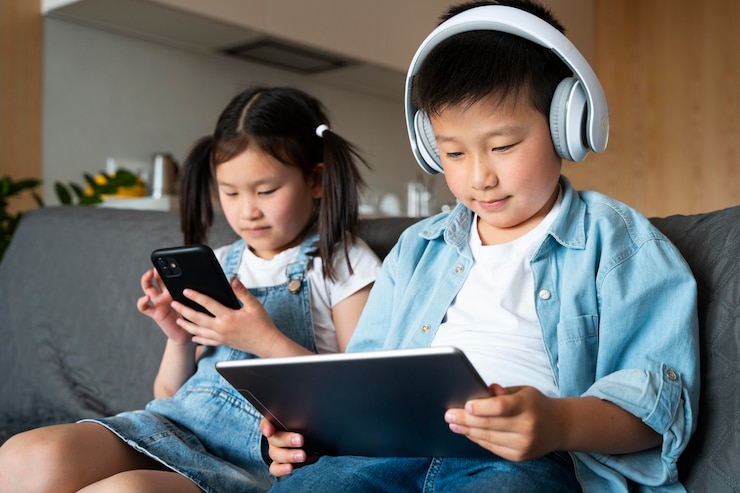
75 Science-Backed Calm-Down Strategies for Kids
Discover 75 simple, engaging, and science-backed techniques to help your child develop strong emotional regulation skills. Don’t miss the free printable with all these calming strategies to have on hand for when your child’s anger or anxiety takes over.
Table of Contents
Developing emotional regulation is one of the most crucial skills for a child’s emotional growth and a strong predictor of future success. Children often struggle with managing their emotions due to their immature nervous systems and a still-developing frontal cortex. If we’re honest, even as adults, many of us are still working on this skill! As a parent, one of the best things you can do to nurture an emotionally intelligent child is to explore different calming strategies that support emotional regulation.
While you might expect these skills to develop naturally, it often takes lots of trial and error, repetition, and teaching for your child to learn how to consistently use healthy coping and calming techniques when faced with strong emotions.
You might be wondering what sets these calming strategies apart. They are research-backed and proven effective because they:
1) Are rooted in neuroscientific understanding of emotional regulation and how a child’s brain processes stress and intense emotions.
2) Incorporate activities involving co-regulation, where children benefit from connected support from caregivers to restore a calm physiological state.
3) Emphasize physical movements that provide calming and organizing sensory input to the brain and nervous system.
Be sure to bookmark or pin this: Anger Management for Kids: A Child Therapist’s No-Fail Secrets to Calm
Let’s begin with a powerful tool: breathing exercises for kids, which quickly disengage the limbic system and reduce stress responses. Writing a letter about feelings or challenging situations can also be therapeutic. Essential oils can have a significant impact on emotions due to their direct influence on the brain’s olfactory center.
Using squeeze balls, putty, or squishy toys provides calming sensory input from joint compression. Animal watching is an excellent way to practice mindfulness with kids. Inversion or hanging upside down can effectively slow down the body’s stress response by quickly engaging the autonomic nervous system.
A grounding exercise involves identifying 5 things you can see, 4 you can hear, 3 you can touch, 2 you can smell, and 1 you can taste. Nature, whether holding something natural or watching it on TV, has been shown to calm the brain significantly.
Gratitude can also help calm the brain’s emotional center. Lying in a ‘prone position’ helps regulate the nervous system, and focusing on a cognitive task can activate the brain’s ‘thinking center’ (frontal lobes) while calming the ‘emotion center’ (amygdala).
Remember, there is no ‘one-size-fits-all’ approach to emotional development. Each child’s needs will vary based on their stage of development, preferences, and circumstances. A big part of nurturing an emotionally intelligent child is teaching them to care for their brain and body during emotional intensity. This list of calm-down techniques is a great place to start!
Don’t forget to grab the free printable list of calming strategies! Keeping track of 75 techniques can be challenging, even before kids come into the picture, so let’s keep it simple.
Here’s a sneak peek…
Related articles you might enjoy:
This post was originally published on 1/30/2020 and has been updated.
About Angela Pruess, LMFT
Welcome! I’m Angela, a Licensed Children’s Mental Health Professional, a Positive Parenting coach, and a mom to spirited kids who teach me something new every day. I believe every child deserves to live their best life, and emotional health is the key to lifelong success and happiness. Learn more about me and the Parents with Confidence manifesto.



